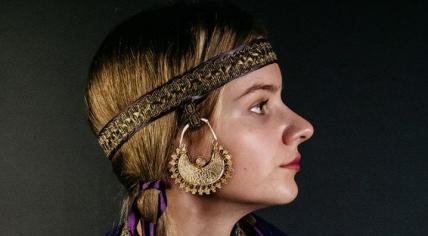
Man with metal detector finds 1,000-year-old jewelry in Noord-Holland city
A man with a metal detector found thousand-year-old gold jewelry and 39 silver coins in Hoogwoud (Noord-Holland) in 2021. The dates on the coins indicate that the valuables were buried around the middle of the 13th century, the National Museum of Antiquities said. The jewelry - four decorated gold pendants shaped like a crescent moon and two pieces of gold leaf that fit together - was already two centuries old by then.
“Gold jewelry from the High Middle Ages is extremely rare in the Netherlands,” the museum said. According to the museum, the discovery is also “of great significance for the archeology and history” of the Netherlands. “Important historical events took place during the period this treasure was buried. It was a troubled time of wars between West Friesland and the county of Holland, in which the Dutch count Willem II died in the vicinity of Hoogwoud.”
The museum is most excited about the four earrings from the 11th century - two pairs about 5 centimeters wide. Two pendants are engraved with scenes, and two with filigree decorations. One pendant is badly damaged, probably when the soil it lay hidden in was plowed. Another features an engraving of a man’s head with rays. According to the museum, it is likely a portrait of Christ as Sol Invictus.
“The jewelry is decorated on one side and has fragile suspension brackets. This suggests that they were probably not for pierced ears but were worn on a hood or headband,” the museum said. “Comparable gold earrings have only been found three times in the Netherlands.”
The silver coins came from the Diocese of Utrecht, various counties including Holland, Gelre, and Kleef, and from the German Empire. The most recent coins were minted in 1247 or 1248 under Willem II as king of the Holy Roman Empire, indicating that the treasure was buried in or shortly after 1248.
Historian and metal detector enthusiast Lorenzo Ruijter found the treasure. He reported the find to the Archeology West Friesland organization, after which the National Museum of Antiquities cleaned, preserved, and examined the coins and jewelry. The treasure remains the property of Ruijter, but he agreed to loan it to the National Museum of Antiquities. The buried treasure will be displayed in the museum’s Temple Room until mid-June

